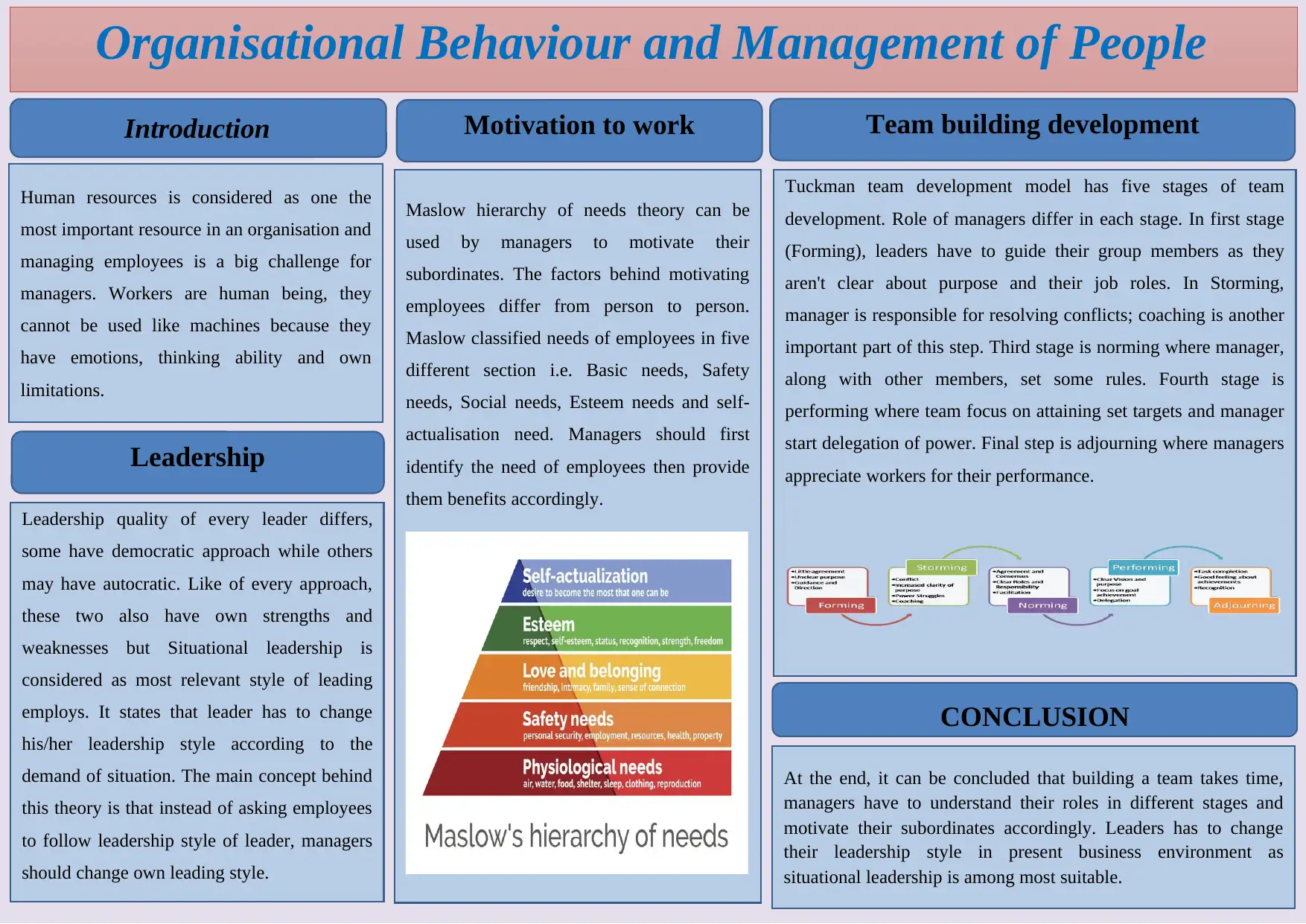Leadership and Team Development: Understanding Employee Behaviour
VerifiedAdded on 2023/01/17
|1
|373
|71
Report
AI Summary
This report delves into the realms of leadership and team development, examining the impact of various leadership styles on employee motivation and behavior. It explores the significance of understanding employee needs, drawing upon Maslow's hierarchy of needs to illustrate how managers can effectively motivate their teams. The report also highlights the Tuckman's team development model, outlining the different stages of team formation and the role of managers in each stage. Furthermore, it emphasizes the importance of situational leadership, where leaders adapt their approach based on the specific circumstances and needs of the team. The conclusion summarizes the importance of understanding the different leadership styles and team development models for effective management.







![[object Object]](/_next/static/media/star-bottom.7253800d.svg)